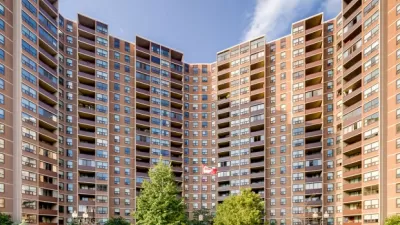A case study in community-led neighborhood revitalization.
Ajeev Bhatia writes about a community-led design initiative in Toronto that presents an innovative new model for grassroots neighborhood revitalization.
As cities around the world imagine new ways to “rebuild better” from the pandemic, it is crucial that these efforts bridge the divides that fuel place-based inequities both within and across communities. One way to do so is by strengthening and connecting the community-led structures that mobilize residents, organizations, and institutions into coordinated action for systemic change. A place-based effort from East Scarborough, Toronto illustrates the promise of this approach.
The example has grown from the strength of local communities in Scarborough, according to Bhatia, as well as a city's Neighbourhood Improvement Areas (NIAs) program. East Scarborough has five such NIAs, but also a strong foundation of community organizations, explains Bhatia. From this context, the East Scarborough Community Design Initiative (CDI) has launched its neighborhood revitalization process.
CDI began as a collaboration between the East Scarborough Storefront, architectural think tank archiTEXT, and architecture firm Sustainable that brought together local KGO youth and design professionals to revitalize a former police station into a much-needed community facility. But the goals of the project were broader than co-creating a community space—they sought to leverage design as a mechanism for inspiring participatory, cross-sectoral investment in social, economic, cultural, environmental, and civic neighborhood well-being for years to come.
Bhatia provides specifics on how the CDI has shifted the neighborhood revitalization paradigm, as well as some of the specific projects that the CDI enabled in the process. The model created by CDI is already spreading across the city of Toronto, according to Bhatia.

Maui's Vacation Rental Debate Turns Ugly
Verbal attacks, misinformation campaigns and fistfights plague a high-stakes debate to convert thousands of vacation rentals into long-term housing.

Planetizen Federal Action Tracker
A weekly monitor of how Trump’s orders and actions are impacting planners and planning in America.

In Urban Planning, AI Prompting Could be the New Design Thinking
Creativity has long been key to great urban design. What if we see AI as our new creative partner?

Cal Fire Chatbot Fails to Answer Basic Questions
An AI chatbot designed to provide information about wildfires can’t answer questions about evacuation orders, among other problems.

What Happens if Trump Kills Section 8?
The Trump admin aims to slash federal rental aid by nearly half and shift distribution to states. Experts warn this could spike homelessness and destabilize communities nationwide.

Sean Duffy Targets Rainbow Crosswalks in Road Safety Efforts
Despite evidence that colorful crosswalks actually improve intersection safety — and the lack of almost any crosswalks at all on the nation’s most dangerous arterial roads — U.S. Transportation Secretary Duffy is calling on states to remove them.
Urban Design for Planners 1: Software Tools
This six-course series explores essential urban design concepts using open source software and equips planners with the tools they need to participate fully in the urban design process.
Planning for Universal Design
Learn the tools for implementing Universal Design in planning regulations.
Appalachian Highlands Housing Partners
Gallatin County Department of Planning & Community Development
Heyer Gruel & Associates PA
Mpact (founded as Rail~Volution)
City of Camden Redevelopment Agency
City of Astoria
City of Portland
City of Laramie





























